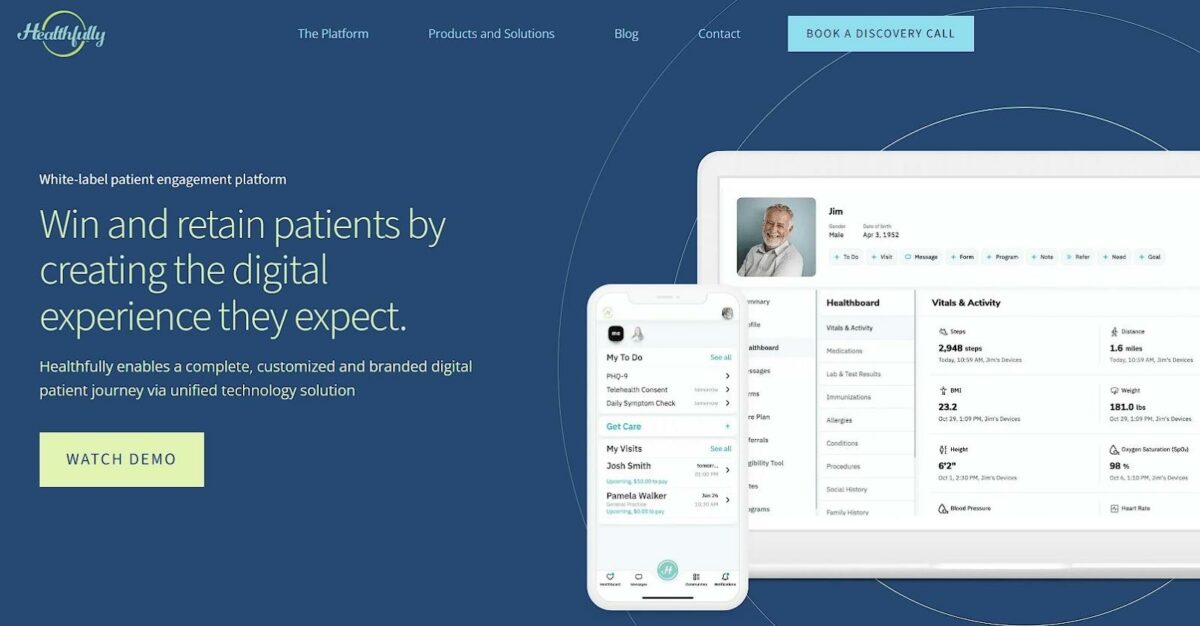Demand for scalable healthcare software is growing. Let’s back up that statement with an interesting study: The software development healthcare industry market is expected to reach around $36 billion by 2026.
So, the market is expected to double in value in less than 3 years. And this is definitely not a random fact.
As healthcare organizations struggle with growing data volumes, user requirements, and regulatory demands, developing scalable software solutions is necessary.
In other words, scalable software development is no longer a luxury. It is a necessity in the healthcare sector.
It involves creating software systems that can seamlessly grow with the organization’s needs. This adaptability is critical in healthcare.
In this blog post, we will analyze the process of developing scalable healthcare software solutions in 2023 and beyond.
Nothing will be left out from understanding your needs to implementing best practices and testing them.
Why Is Scalable Software Development Important In Healthcare?
Let’s start with some basics: scalable health software development is a transformative strategy.

In an industry where rapid advances, changing patient needs, and regulatory shifts are the norm, scalability ensures that healthcare software remains relevant and effective.
That means it can seamlessly adapt to growth, whether it’s an expansion of services, an increase in patient volume, or integrating new technologies.
A scalable healthcare platform, therefore, is nimble, adaptable, and ready to absorb any technological changes in the near future.
It becomes evident that creating fully scalable software isn’t easy. This applies to almost every niche out there, but especially in healthcare. To do it correctly, you’ll need to be methodical. And that’s precisely what the following section is all about.
Creating Scalable Healthcare Software: Step By Step Process
Developing scalable healthcare software requires a well-structured approach, where every phase is carefully executed.
This section’ll delve into a step-by-step process allowing you to create scalable healthcare software based on your needs. Ready to adapt and thrive in a rapidly evolving environment? Let’s find out how:
1. Understand Your Requirements
Before beginning the development process, you must first clarify your requirements. This is the foundation on which your scalable software solution will be built.
Consider your users’ needs, the features important to your operation, and most importantly, your scalability requirements.
In healthcare, where data volumes and patient expectations continue to grow, a deep understanding of these needs is paramount.
To make this understandable, we need to talk about a concrete example. While many healthcare companies have developed scalable platforms, an interesting case study is Healthfully, a healthcare provider that has cleverly leveraged a cloud-based platform.

Healthfully’s white-label patient engagement platform enables a comprehensive, personalized, and branded digital patient experience through a unified, cloud-based technology solution.
Their success story shows how understanding your needs can lead to transformative solutions.
2. Designing For Scalability
Once you’ve grasped your requirements, the whole process automatically becomes easier. The next step is to design your software with scalability in mind.
This entails selecting the appropriate architecture and technologies while ensuring your code is modular and reusable.
A scalable design allows your software to expand seamlessly as your healthcare organization evolves.
In essence, it’s the blueprint for growth, ensuring that your software solution can flex and adapt to meet the ever-changing healthcare industry demands.
Based On Scalability: Selecting the Right Healthcare Software Development Firm
Regarding scalability, your choice of a healthcare software development firm is pivotal.
The ideal partner should possess expertise in healthcare, align with your scalability needs, and be adept at utilizing the latest technologies.
Their experience will be crucial in creating top-notch platforms, regardless of the types of healthcare software you’ll opt for.
Collaborating with a healthcare software development firm that understands the unique challenges and opportunities within the industry ensures your solution is scalable and tailored to meet your specific needs. T
This strategic partnership can make all the difference in achieving long-term success and innovation in healthcare software.
3. Implementing Best Practices
When developing a brand-new scalable platform, it is very important to keep in mind some of the best practices presented in the industry.

Key practices include using elements such as a cloud-based platform, designing for resilience, and implementing robust monitoring and observability.
Cloud-based solutions offer the flexibility to scale resources as needed, so your software can easily handle larger loads.
Resiliency ensures that your software can easily recover from failures, minimizing downtime.
Finally, robust monitoring and observation tools provide real-time insights into your software’s performance and enable proactive adjustments to ensure scalability.
4. Test and Deploy
With all of this in mind, you’ll be able to build a top-class platform that not only meets the needs of your users, but is also fully scalable.
No matter how big your business grows in the future, your software will easily be able to keep up with the growing demands.
Once your scalable healthcare software solution is developed, it’s crucial to subject it to rigorous testing and deployment practices.
This involves using a continuous integration and continuous delivery (CI/CD) pipeline, enabling automated and efficient testing, integration, and deployment.
It’s essential to monitor your software in a production environment, ensuring it continues operating optimally as it scales.
Thorough testing and seamless deployment are the final steps in ensuring that your healthcare software is not just scalable but also reliable and robust in a dynamic healthcare landscape.
Our Verdict
To wrap everything up, scalable software development is necessary for healthcare businesses.
Understanding your requirements, designing for scalability, choosing the right development firm, implementing best practices, and thorough testing and deployment are all the crucial steps you’ll need to follow to achieve a scalable solution.
The potential benefits of scalability, including improved operational efficiency, reduced costs, and enhanced patient care, are undeniable.
However, it’s important to take a proactive approach to software development to harness these advantages and stay competitive.
As you embark on this journey, consider partnering with experienced healthcare software development firms to ensure your success. Your scalable future awaits – seize it now!
Ella Marcotte
Latest posts by Ella Marcotte (see all)
- UA vs GA4: The 4 Big Differences You Need To Know - April 26, 2024
- Understanding The Role Of Control Valves In Industrial Automation - April 8, 2024
- How Automation Can Boost Your Business Outcomes - April 4, 2024




